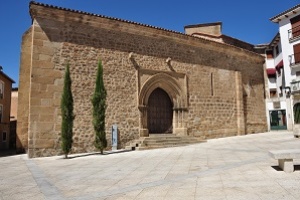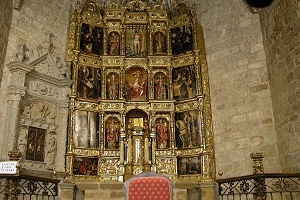Art and culture
Iglesia de San Martín
Considered the oldest church in Plasencia, it houses a marvellous Plateresque altarpiece with paintings by Extremeñan Luis de Morales, dated between 1565 and 1570.
- Explore
- Iglesia de San Martín
"Divine" Morales in all his glory
Location and Contact:
- Tel.:927423843
- Email: oficina.turismo@aytoplasencia.es
- Website address: https://plasenciaturismo.es/iglesia-san-martin
- Opening times
From Tuesday to Saturday: 12pm - 2pm // 4pm - 6pm
- Fee
Individual: €2,50
Groups: €1,50
-
Considered the oldest church in Plasencia, it houses a marvellous Plateresque altarpiece with paintings by Extremeñan Luis de Morales, dated between 1565 and 1570.
The church was built in the first half of the 13th century in Romanesque style at the heart of Plasencia, very close to the Plaza Mayor. Of the original building, only the southern wall and one of the jambs of the door in the northern façade. The interior is divided in three naves from the 14th and 15th centuries, and the high altar, with its rib vaulted roof, dates from the 15th century.
It does not regularly serve as a place of worship, in fact, it depends on the church of San Esteban.
Without a doubt, the most valuable element in the Church of San Martin is the gold and polychrome altarpiece with paintings by Luis de Morales, El Divino, one of the best Spanish artists of his time. Of the right paintings in the San Martín altarpiece, four (The Annunciation, St. Martin, The Visitaiton and The Circumcision) are attributed to Luis de Morales, who was born in Badajoz in 1510 and died in Alcántrara in 1586. Conversely, The Fathers of the Church, Nativity, Epipahy and St. Martin on horseback, would be products of other painters in his workshop
Morales was commissioned with painting the San Martín altarpiece while working in the impressive high altarpiece of the Church of La Asunción in Arroyo de la Luz, between 1560 and 1563. In fact, of the many altarpieces made by Luis de Morales, only those in Arroyo de la Luz and San Martin in Plasencia are still mounted as complete ensembles, with their original structure and decorations.
Works for cleaning and improving lighting and acoustics ended in 2015, allowing visitors to admire the beauty of this late Romanesque temple and its altarpiece, fundamental for understanding the vast religious and cultural heritage of Plasencia.
-
- Origin:
-
- 13th century
- Construction:
-
- Church
- Art period:
-
- Romanesque
- Period in history:
-
- 13th century
- 14th century
- 15th century
Gallery:
More suggestions
-
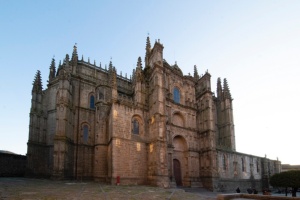
Plasencia Cathedral
Plasencia Cathedral is one of the city's most popular architectural landmarks and is actually made up of two cathedrals: the old cathedral and the new cathedral.
-
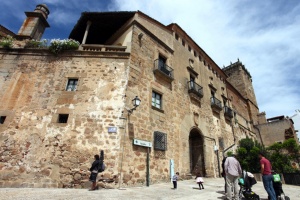
Mirabel Palace
Mirabel Palace, in Plasencia, is one of the most important buildings in the city.
-
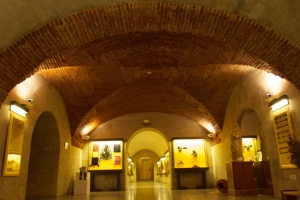
Pérez Enciso Ethnographic Textile Museum
This was the first monographic museum dedicated to the popular culture of Cáceres
-
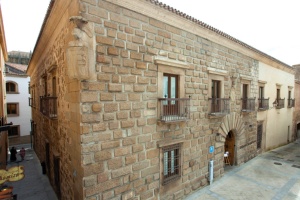
Hotel Palacio Carvajal Girón
Spend the night of your dreams in this 16th century Renaissance palace converted into a hotel. Discover its sombre and elegant architecture together with interiors of another era.
-

Mirabel Palace
Mirabel Palace, in Plasencia, is one of the most important buildings in the city.
-
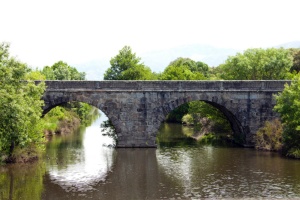
Cáparra Roman bridge
Cáparra Roman bridge is in perfect condition because it has been remodelled many times over the centuries.
-
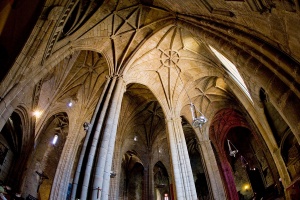
Sanctuary of La Virgen del Puerto
In a picturesque enclave, set amidst vegetation with impressive views of the Jerte Valley.
-
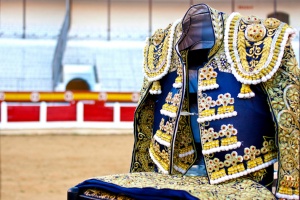
Malpartida de Plasencia Bullring
4,000 people can enjoy the bullfighting festivals and other events that are held in this enclosure.
-

Plasencia Bullring
The greatest bullfighting figures can be seen in Plasencia's bullring in June and August.
-

Parque de los Pinos
The peculiar orography of this park shelters a host of species of trees and animals.
-

Iglesia de San Nicolás
Construida en el siglo XIII, es una de las primeras iglesias de Plasencia. Está situada en la Plaza de San Nicolás, en uno de los rincones más bellos de la ciudad, muy cerca de la Plaza Mayor y de las catedrales.
-

Plasencia Cathedral
Plasencia Cathedral is one of the city's most popular architectural landmarks and is actually made up of two cathedrals: the old cathedral and the new cathedral.
-

Monte Valcorchero
With its impressive cork oaks and unique granite outcrops, Valcorchero is a special place

